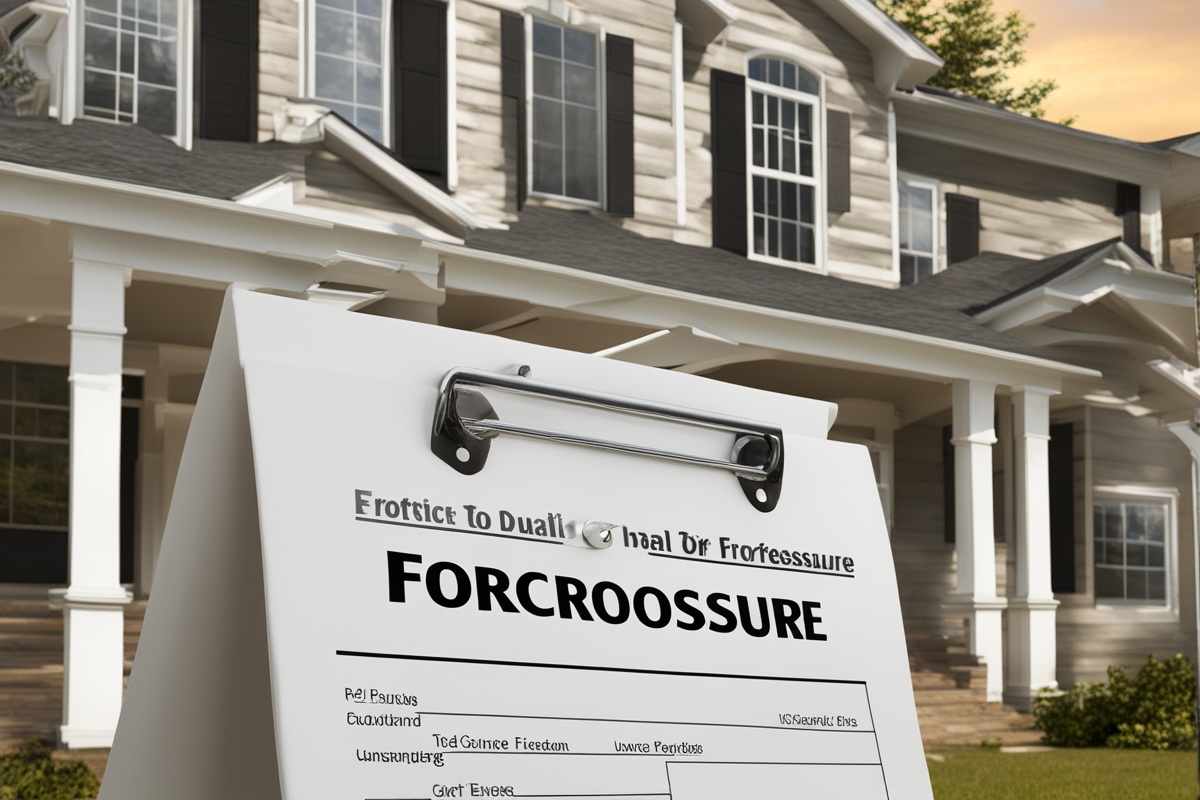As homeowners navigate the uncertainties of the housing market, understanding how to protect your property from potential loss is more crucial than ever. This post dives into the Best Foreclosure Prevention Strategies 2025, offering actionable insights to help you safeguard your home. Whether you’re facing financial challenges or simply planning ahead, these strategies provide a roadmap to avoid foreclosure and maintain stability. Let’s explore practical steps and expert tips to ensure your home remains secure in the coming year.
Top Strategies to Avoid Home Loss in 2025
Navigating the risk of losing your home can be daunting, but with the right approach, you can stay ahead of potential issues. The Best Foreclosure Prevention Strategies 2025 focus on proactive financial planning and early intervention. One of the most effective methods is to create a robust budget that prioritizes mortgage payments, ensuring you don’t fall behind even during unexpected financial hiccups [1]. Additionally, building an emergency fund can act as a safety net, covering at least three to six months of living expenses, including your mortgage.
Another key strategy is to stay informed about government programs and lender assistance options that may be available in 2025. Many lenders offer hardship programs or temporary payment reductions for borrowers facing difficulties. Regularly checking for updates on housing relief policies can provide critical support. For more foundational knowledge, explore resources like Foreclosure Basics: Essential Tips for Homeowners to deepen your understanding of the process and prevention tactics [2].
Essential Tips for Preventing Property Seizure
When it comes to stopping property seizure, communication with your lender is paramount. Don’t wait until you’ve missed multiple payments to reach out. As soon as you anticipate a problem, contact your mortgage provider to discuss options like loan modifications or forbearance agreements. These arrangements can temporarily lower or pause payments, giving you time to recover financially. Understanding the foreclosure process through a reliable resource such as Understanding Foreclosure Basics: A Comprehensive Guide can also empower you to act swiftly [3].
Another tip is to seek professional advice from a housing counselor certified by the Department of Housing and Urban Development (HUD). These counselors can offer personalized guidance on managing debt and negotiating with lenders. They often provide free or low-cost services, making them an accessible option for homeowners under stress. Staying proactive and informed about your rights as a borrower can make a significant difference in preventing property loss.
Key Steps to Safeguard Your Home in 2025
Safeguarding your home requires a combination of financial discipline and strategic planning tailored to future challenges. One of the first steps in the Best Foreclosure Prevention Strategies 2025 is to regularly review your mortgage terms and interest rates. If rates are expected to rise in 2025, consider refinancing to lock in a lower rate before costs increase, provided your credit and financial situation allow it [4].
Additionally, prioritize paying down high-interest debts that could strain your budget and divert funds from your mortgage. If you’re unsure where to start, tools and calculators available through resources like Facing Foreclosure? Explore Your Options And Take Control can help you map out a debt repayment plan. Addressing these issues early can prevent a snowball effect on your finances. So, what are the Best Foreclosure Prevention Strategies 2025 all about? They center on preparation and timely action to keep your home secure.
Smart Ways to Stop Repossession Early
Stopping repossession before it escalates is often the most effective way to protect your home. One smart approach is to explore a short sale if you’re unable to maintain payments and equity in the property is low. A short sale allows you to sell the home for less than the mortgage balance with lender approval, avoiding the long-term credit damage of a foreclosure. For alternative solutions, check out Facing Foreclosure? Explore Your Options And Save Your Home for detailed insights.
Imagine discovering a sudden job loss has put your mortgage at risk. In such a scenario, immediately listing your home for a short sale or negotiating a deed-in-lieu of foreclosure—where you transfer ownership back to the lender—can mitigate further financial harm. These options, while not ideal, preserve your credit better than a full foreclosure process and allow for a fresh start. Acting quickly and decisively is key to minimizing damage [5].
2025 Guide to Halting Mortgage Default
Halting a mortgage default in 2025 requires staying ahead of trends and potential economic shifts. One critical step is to monitor your credit score closely, as it impacts your ability to negotiate with lenders or secure alternative financing. If you notice missed payments affecting your score, take immediate steps to rectify the situation by setting up automatic payments or reminders to avoid future lapses. Understanding the broader foreclosure landscape through a solid foreclosure guide can also prepare you for unexpected challenges.
Another focus for 2025 is leveraging technology to manage finances. Apps and platforms that track spending and alert you to upcoming bills can prevent oversight of mortgage payments. Additionally, consider joining local homeowner support groups or online forums where you can share experiences and learn from others who have successfully navigated default risks. These communities often provide real-world advice and emotional support during tough times.
- Enroll in automatic payment plans to ensure timely mortgage contributions.
- Use budgeting apps to track income and expenses, prioritizing housing costs.
- Join homeowner forums for peer advice on avoiding default.
- Monitor economic forecasts for 2025 to anticipate interest rate changes.
Core Foreclosure Basics for Home Protection
Understanding the core principles of foreclosure is essential for any homeowner aiming to protect their property. At its most basic, foreclosure occurs when a lender takes legal action to repossess a home due to missed mortgage payments. Knowing the timeline and stages of this process—such as pre-foreclosure, auction, and post-foreclosure—can help you identify intervention points. For instance, the pre-foreclosure stage offers opportunities to negotiate with lenders or seek assistance before the situation escalates.
Here are some fundamental actions to reinforce home protection:
- Document all communications with your lender for clarity and legal protection.
- Research state-specific foreclosure laws, as timelines and rights vary widely.
- Explore local housing assistance programs for financial aid or counseling.
What are some key questions to ask when facing potential default? How can I access resources to prevent loss? Addressing these concerns early by tapping into educational content on foreclosure basics can build a strong defense against property loss [6].
This content is for informational purposes only and not financial advice; consult a professional.
References
- [1] Report on Best Foreclosure Prevention Strategies 2025, Housing Trends 2024
- [2] Article on Foreclosure Basics and Homeowner Rights, 2023
- [3] Study on Early Intervention in Mortgage Defaults, Financial Aid Journal 2024
- [4] Guide to Refinancing and Mortgage Protection in 2025, Economic Insights
- [5] Case Study on Short Sales vs. Foreclosure Outcomes, Real Estate Review 2023
- [6] Overview of Foreclosure Timelines and Prevention Tactics, Homeowner’s Manual 2024





